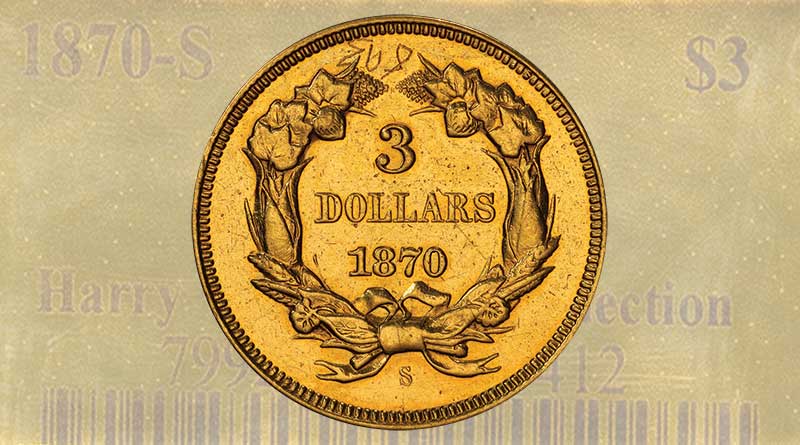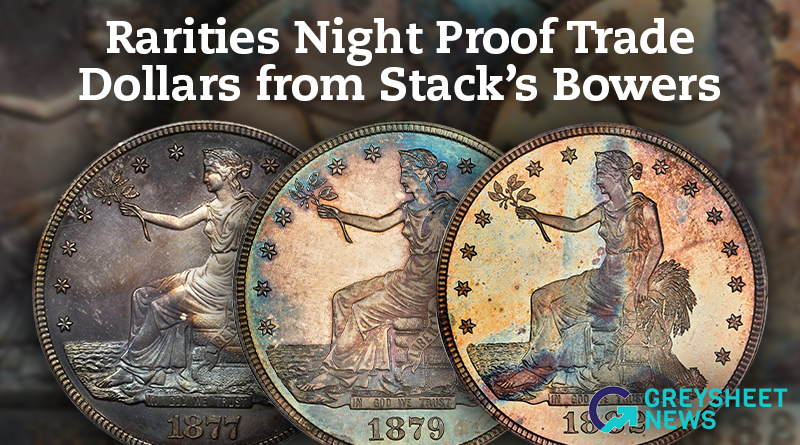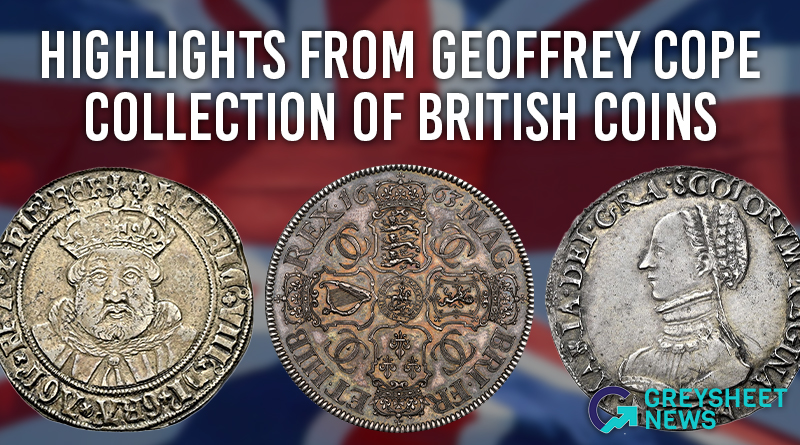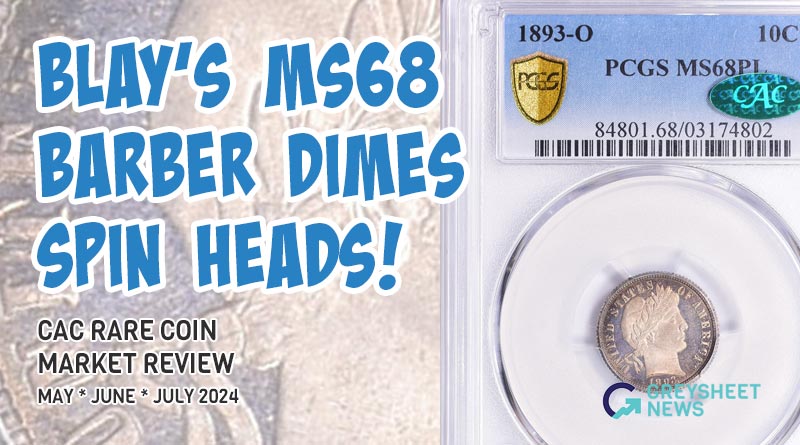The Harry Bass 1870-S $3 Gold Piece: A Review
Greg Reynolds analyzes the recent sale of the unique 1870-S Three Dollar Gold Rarity from the Bass Collection.
AMONG COLLECTORS, the coin in the Harry Bass Core Coin Collection (HBCC) that was discussed most often was the unique 1870-S Three Dollar Gold piece, which is the topic here. For general information about the current series of auctions of coins and patterns from the HBCC, please see my already published articles: on unusual Bass Collection items, on the Bass I sale on September 29, and on patterns in Bass II on January 5. The unique 1870-S is required for a complete set of 1870-S Three Dollar Gold business strikes. In my view, this coin and known 1870-S coins of all other denominations are business strikes.
I have carefully examined the unique 1870-S half dime and eight of nine known 1870-S silver dollars. Moreover, I have seen many 1870-S dimes, half dollars, quarter eagles, half eagles, eagles, and double eagles. Not one is a Proof or a Non-Proof Special Striking. Some are considerably prooflike. Early strikings from normally polished dies are apt to be at least somewhat prooflike. Evidently, the Heritage cataloguer agrees, as he states that it is “unlikely” that any 1870-S coins of any denomination “were specially struck.”
It is hard to conceptualize the appearance of the unique 1870-S Three Dollar Gold piece the moment after it was struck because it was substantively cleaned with a potent solution, has been subject to pitting and was polished long after it left the San Francisco Mint. It has the level of detail of an Almost Uncirculated (AU) grade coin.
Additionally, the Heritage cataloguer and others have stated that the 1870-S Three was harmed by having been mounted in the past. I found it impossible to fairly examine the edge while this coin was in a PCGS holder.
As far as I know, the 1870-S Three was not encapsulated before 2022. In October 1982, Bowers & Ruddy auctioned the U.S. gold coins from the Eliasberg Collection, including this 1870-S Three Dollar Gold piece.
“From 1870 until sometime around the turn of the century, the piece apparently saw use as jewelry,” Q. David Bowers asserts in the catalogue. The 1870-S Three “has a slightly pebbled appearance and also has some minor damage on the obverse rim below the bust,” Bowers adds in the catalogue for the auction of Eliasberg’s U.S. gold coins (Los Angeles: Bowers & Ruddy, 1982, p. 98).
The 1870-S Three Dollar Gold piece was auctioned on October 27, and the effectively unique 1822 half eagle was auctioned the following evening, October 28, 1982. They both realized the same price, $687,500 including buyer’s premium. Harvey Stack acted as agent for Harry Bass. David Akers acted as agent for the Pogue family, the buyer of the Eliasberg 1822 half eagle in 1982.
Although three 1822 half eagles are known, two of the three are impounded in the collection of the Smithsonian Institution, a museum and research facility in Washington. Though it does not score very high in the category of originality, the Eliasberg-Pogue 1822 half eagle is far more original, in relative terms, than the Eliasberg-Bass 1870-S Three Dollar Gold piece. Indeed, the 1822 is unquestionably of much higher quality.
Even so, the Eliasberg-Pogue 1822 is not a high quality coin; if it was dated 1820 rather than 1822, it would be considered a sub-par Capped Head half eagle. Although the 1870-S Three is clearly non-gradable in my opinion, I had to think for at least a minute before concluding that the Eliasberg-Pogue 1822 half eagle is gradable. This 1822 five, though, is attractive in its own way, with an entertaining orange color. Non-gradable coins are usually placed in so-called Details holders without numerical grades, though allowances are sometimes made by grading services for Great Rarities.
To compare these two Great Rarities, it is important to keep in mind that a set of business strike Threes is relatively easy to complete except for this 1870-S. A set of Capped Head half eagles, in contrast, is the most difficult of all series of United States coins to even 80% complete. There are numerous Great Rarities, including, but not limited to, the 1815, 1821, 1825/4, 1828, 1829, and 1831.
Excepting the 1870-S, a set of business strike Three Dollar Gold pieces is not difficult to complete, and could probably be finished in a matter of months without paying very strong prices. For example, the 1854-D is a key or semi-key Three. In August 2022, Stack’s Bowers auctioned a CAC approved AU50 grade 1854-D for $55,200. While this amount is regarded as a lot of money by most people, it is not a giant sum in the context of popular and very rare U.S. gold coins.
To complete a set of business strike Capped Head half eagles, there would be a need to acquire numerous coins that cost more than $50,000 each. An 1819 would probably cost more than $100,000. An 1829 would be likely to cost at least $250,000. Either of two known, true 1825/4 (BD2) overdates would probably cost more than $1 million in 2023, if one of the two could really be purchased.
An immediate point is that collecting Threes by date is far more practical than collecting Capped Head half eagles by date and many more people do so. The contents of a set of Threes are easy to remember. The number of wealthy collectors who would like to complete a set of Threes is far greater than the number focused on Capped Head half eagles.
Until the Dexter-Dunham 1804 silver dollar sold for $990,000 in 1989, the $687,500 result for the 1870-S Three and for the Eliasberg-Pogue 1822 five was the highest auction price for any kind of coin. In November 1988, the Norweb Family 1861 Philadelphia Mint, Paquet reverse double eagle came close to this record by selling for $660,000 in the Norweb III sale by Bowers & Merena. If it is imagined that the Eliasberg 1822 five or the 1870-S Three was in the same Norweb III sale in 1988, either would have sold for much more than the Norweb 1861 Philadelphia Paquet double eagle, probably more than $1 million.
Yes, it is true that only two Philadelphia Mint Paquet reverse 1861 double eagles survive. The obverse of each, however, is not distinctive. The Mint experimented with a reverse design that was modified by Anthony Paquet. The letters and numerals on the reverse are slightly different, and some design elements are positioned differently. The overall design of the reverse, though, is almost the same as that of the typical Longacre reverse. If Paquet reverse varieties were not emphasized in major references, many interested collectors would probably not even notice them.
On August 18, 2021, the Norweb 1861 Philadelphia Paquet was auctioned by Heritage for $7.2 million, about eleven times the price it realized in November 1988. On March 25, 2021, Stack’s Bowers auctioned the Eliasberg-Pogue 1822 half eagle for $8.4 million. Earlier, on January 21, 2021, Heritage auctioned the finest of six known Brasher Doubloons for $9.36 million.
The $7.2 million result for the Norweb Paquet 1861 double eagle was extremely strong. Merely five million would have been a strong price. The $8.4 million result for the Eliasberg-Pogue 1822 was very strong. I suggest a median retail value was and still is in the $7 million to $7.25 million range for this 1822 five, which is worth a little more than the unique 1870-S Three.
The $5.62 million result for the 1870-S Three on January 5, 2023 was around the wholesale-retail border, in my estimation. The current Greysheet Bid level for this coin, $5.5 million, is fair and accurate. I suggest that the CPG® retail value be increased a little from $6.6 million to $6.75 million.
Louis Eliasberg, Sr. thought that the 1870-S Three was extremely important, as did Harry Bass. On January 5, I was surprised that Dell Loy Hansen was not willing to pay more than $6 million for it.
Copyright ©2023 Greg Reynolds, Insightful10@gmail.com
Images courtesy of Heritage Auctions, HA.com and TrueView Images provided by Collectors Universe.

Download the Greysheet app for access to pricing, news, events and your subscriptions.
Subscribe Now.

Subscribe to The Greysheet for the industry's most respected pricing and to read more articles just like this.
Source: Greg Reynolds












Please sign in or register to leave a comment.
Your identity will be restricted to first name/last initial, or a user ID you create.
Comment
Comments